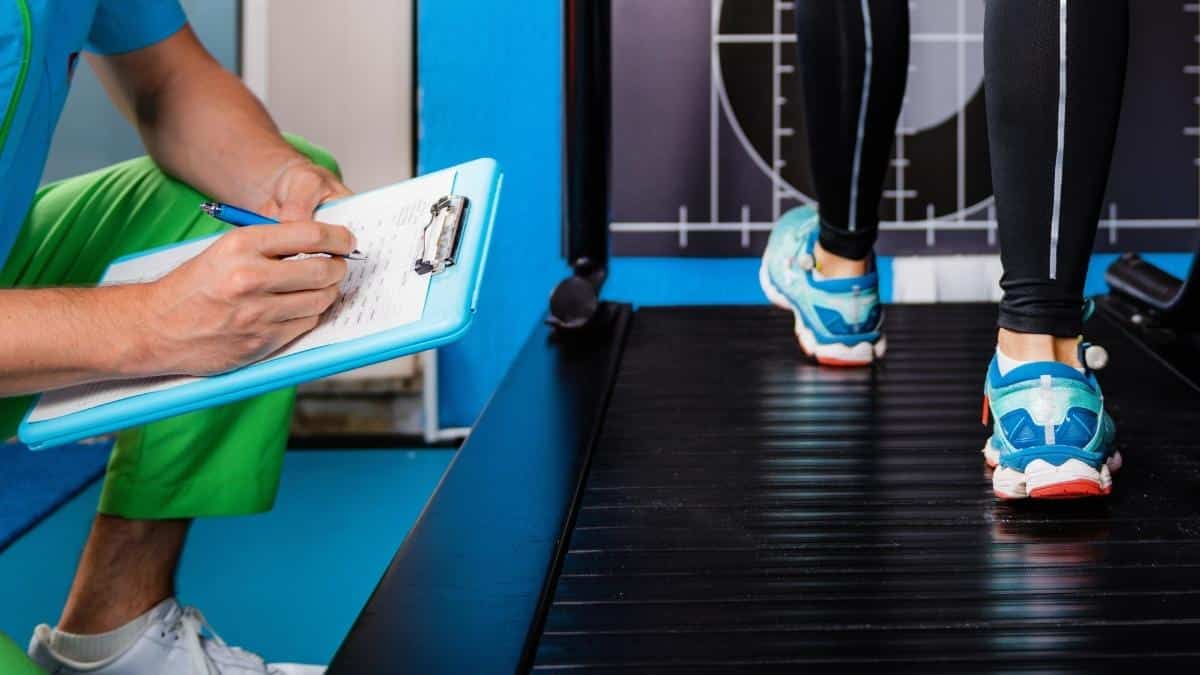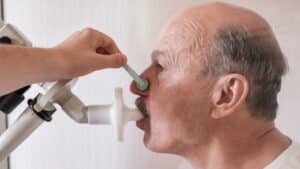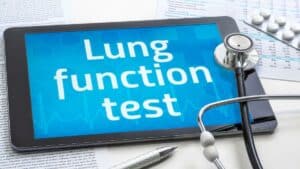For people living with chronic obstructive pulmonary disease (COPD), undergoing lung function testing, such as pulmonary function tests, is a typical occurrence.
Part of your treatment plan may include pulmonary rehabilitation—a program that combines exercise, education and support to help people learn to breathe and function at the highest level possible.
During pulmonary rehabilitation, a 6-minute walk test is typically performed at the start of the program or to evaluate a person for lung surgery.
Here’s what you need to know about the 6-minute walk test for COPD.
What is a 6-Minute Walk Test for COPD?
The 6-minute walk test measures the distance someone can walk quickly on a flat, hard surface in 6 minutes. The test reflects the person’s ability to perform daily physical activities.
Because COPD affects everyone differently, lung function and exercise tolerance testing help doctors and patients work together to develop the best treatment plan.
The 6-minute walk test was developed as a valid alternative to standard treadmill-based exercise testing for people who are elderly or who cannot perform treadmill-based exercise testing.
You may have another 6-minute walk test after a certain amount of time has passed to test how much you have improved, as well.
Who Needs a 6-Minute Walk Test?
One of the most important reasons to have a 6-minute walk test is to measure the response to medical intervention in a person with moderate to severe heart or lung disease, such as COPD.
Your doctor may also use a 6-minute walk test to provide valuable information about your ability to perform daily activities, to evaluate how your body responds to exercise and as a measurement of functional status.
Some people may not be candidates for the 6-minute walk test. Talk with your doctor before having a 6-minute walk test if you have any of the following:
- Unstable angina (during the month prior to the test)
- Heart attack (the month prior to the test)
- Resting heart rate of more than 120 beats per minute
- Systolic blood pressure of more than 188mm Hg
- Diastolic blood pressure of more than 100mm Hg
You and your doctor can discuss your exercise testing, lung function testing and treatment needs in more detail and decide what procedures are right for you.
Preparing for Your 6-Minute Walk Test for COPD

There are a few simple tips to help you prepare for your 6-minute walk test for COPD. On the day of your test, remember to follow your doctor’s specific instructions and to do the following:
- Wear comfortable clothing
- Wear comfortable shoes designed for walking, like sneakers or tennis shoes
- Use walking aids if you normally need them, such as a cane or walker
- Eat a light meal before early morning or afternoon tests
- Avoid vigorous exercise within 2 hours prior to the test
Your 6-minute walk test technician will explain what will happen during the test, what you need to do and how to report your symptoms.
Tell your technician immediately if you begin to experience chest pain, intolerable shortness of breath (dyspnea), leg cramps, staggering or excessive sweating.
If your technician notices you have become pale or ashen in appearance, the technician should stop the test at once.
Helpful Tips for Your 6-Minute Walk Test for COPD
To make your 6-minute walk test experience easier, here are some helpful tips to keep in mind:
- You are permitted to slow down, stop and rest as needed.
- You may lean against a wall when resting, but you must remain standing.
- If you do stop to rest, remember that the timer will not stop when you do. You need to start walking again as soon as you’re ready.
- Your technician will watch carefully as you walk and announce your elapsed time every minute.
- You can bring up questions or concerns with your technician at any time.
6-Minute Walk Test for COPD Test Results
Most 6-minute walk tests are performed twice. Your first test occurs prior to receiving therapeutic interventions, and the second afterward.
Performing the test twice helps your doctor determine if you have experienced significant improvement in functional status, such as in your ability to perform daily tasks.
One of the goals of receiving medical treatment for COPD is to be able to walk farther during the second test.
In fact, there are studies showing that people who underwent exercise, diaphragmatic strength training and other medical treatments actually increased the distance they walked during the second test.
While the 6-minute walk test is a useful tool, the test should only be performed under medical supervision at a medical facility.
What’s Next?

Along with lung function testing and exercise testing, such as the 6-minute walk test for COPD, you and your doctor will work together to develop the best COPD treatment plan for you.
This plan could include medications, inhalers, supplements, oxygen therapy, exercise, diet and alternative therapies.
Always discuss treatment plans with your doctor to decide what is best for you.

Christine Kingsley, APRN is the Health and Wellness Director at the Lung Institute where she focuses on providing helpful online resources for people looking for information on various lung diseases, breathing exercises, and healthy lifestyle choices. She advocates for holistic care that involves working with your doctor to explore all options including traditional and alternative care while focusing on diet and exercise as proactive measures.









